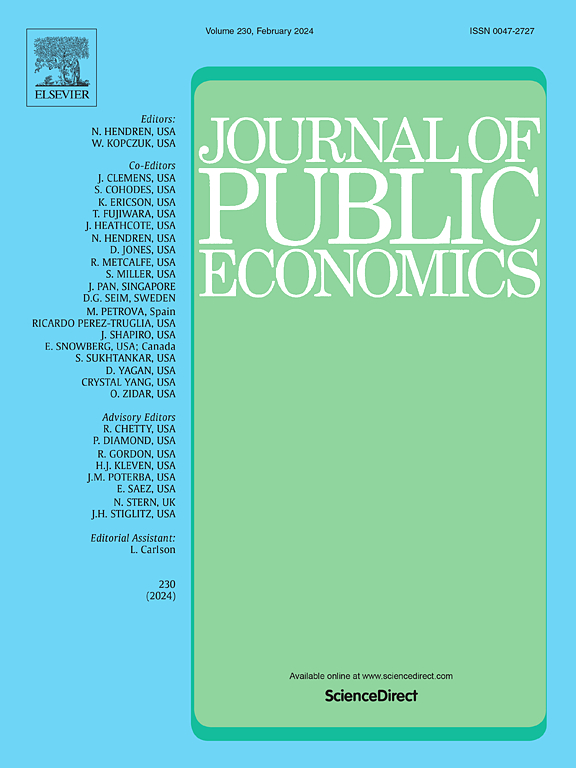健康的风险与生命的价值
IF 3.4
1区 经济学
Q1 ECONOMICS
引用次数: 0
摘要
我们将评估健康和寿命改善的传统生命周期框架扩展到具有多种健康状态的随机环境中,并将其应用于具有不同合并症的成年人的死亡率、生活质量、劳动收入和医疗支出数据中。我们发现,为了降低死亡风险,患病成年人愿意为每质量调整生命年(QALY)支付的费用几乎是健康成年人的两倍,而且降低重病风险与降低轻病风险的价值类似。我们的研究结果合理地解释了为什么人们反对用单一的阈值来配给医疗服务,以及为什么他们在预防方面的投资少于治疗方面的投资。本文章由计算机程序翻译,如有差异,请以英文原文为准。
Health risk and the value of life
We extend the conventional life-cycle framework for valuing health and longevity improvements to a stochastic setting with multiple health states and apply it to data on mortality, quality of life, labor earnings, and medical spending for adults with different comorbidities. We find that sick adults are willing to pay nearly twice as much per quality-adjusted life-year (QALY) to reduce mortality risk as healthy adults, and that reducing the risk of serious illness is valued similarly to reducing the risk of mild illness. Our results provide a rational explanation for why people oppose a single threshold value for rationing care and why they invest less in prevention than in treatment.
求助全文
通过发布文献求助,成功后即可免费获取论文全文。
去求助
来源期刊

Journal of Public Economics
ECONOMICS-
CiteScore
14.10
自引率
2.00%
发文量
139
审稿时长
70 days
期刊介绍:
The Journal of Public Economics aims to promote original scientific research in the field of public economics, focusing on the utilization of contemporary economic theory and quantitative analysis methodologies. It serves as a platform for the international scholarly community to engage in discussions on public policy matters.
 求助内容:
求助内容: 应助结果提醒方式:
应助结果提醒方式:


